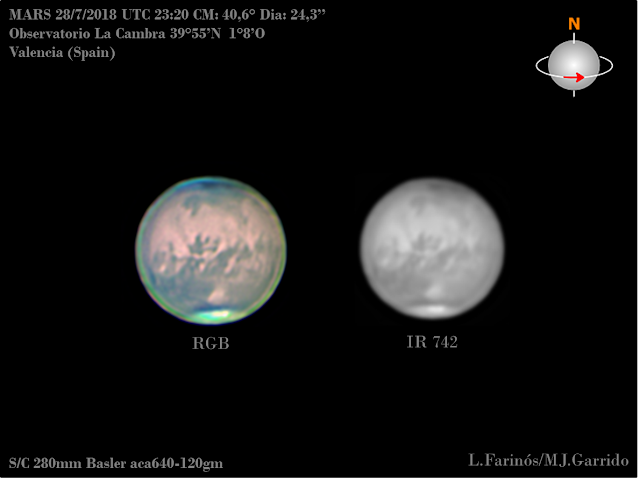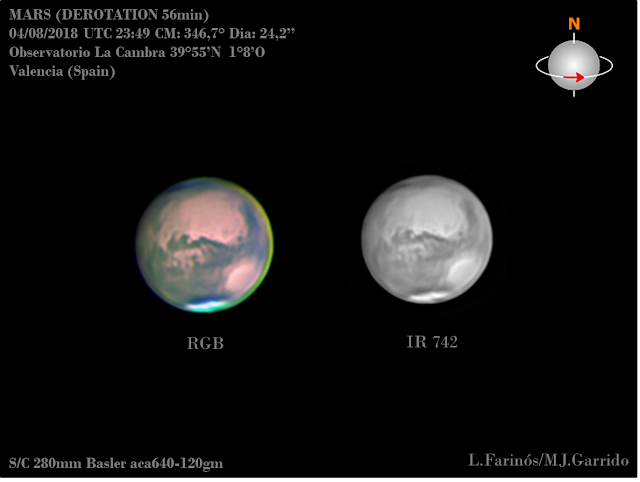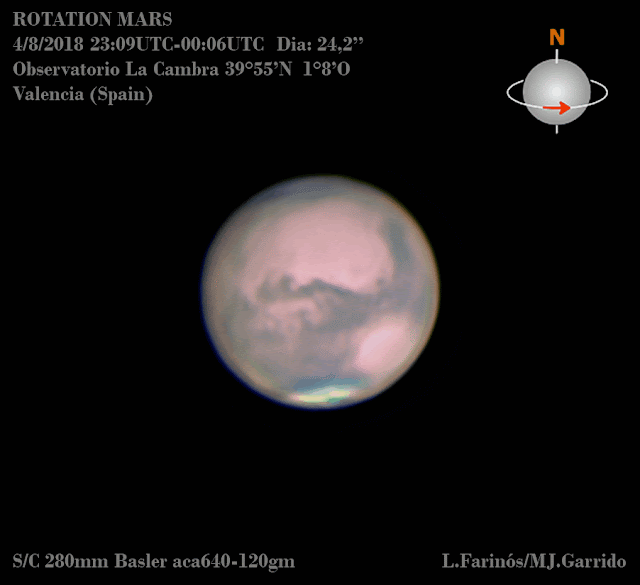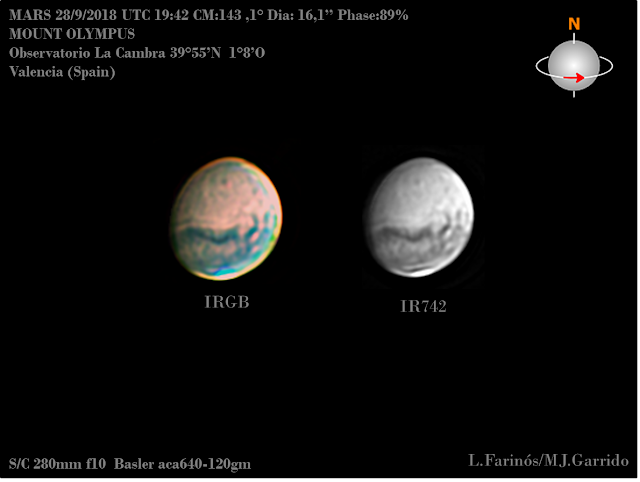Marte
Marte 28/7/2018 23:20UTC
Las buenas condiciones de cielo permitieron capturar la orografia de Elysium y Mare Acidalium. Aun quedaban restos de la tormenta de arena global que azoto el planeta rojo durante el ultimo mes. Se realizaron tomas de 180 segundos en cada filtro (Secuencia R-G-B-IR742) con exposiciones de alrededor 8ms. La luna no estaba presente, por lo que ayudo a la calidad de las tomas.
The
good sky conditions allowed to capture the orography of Elysium and Mare
Acidalium. There were still remnants of the global sandstorm that hit the red
planet during the last month. Shots of 180 seconds were made in each filter
(Sequence R-G-B-IR742) with exposures of around 8ms. The moon was not present,
so I help the quality of the shots.
Marte 4/8/2018 23:49UTC
Excelentes condiciones y noche sin luna. Toma de la zonas de Mare Sirenum y Mare Cimmerium. La tormenta de arena practicamente es inexistente o no perjudica la captura de detalles en la superficie Marciana. Vídeos de 240 segundos en cada canal (R-G-B-IR742) y posterior procesado de todas las tomas con Winjupos consiguiendo una derotación de 56 minutos.
Excellent
conditions and night without moon. Take the areas of Mare Sirenum and Mare
Cimmerium. The sandstorm is practically non-existent or does not harm the
capture of details on the Martian surface. Videos of 240 seconds on each
channel (R-G-B-IR742) and subsequent processing of all shots with Winjupos
achieving a derotation of 56 minutes.
Rotación Marte 4/8/2018 23:09UTC - 00:06UTC
Animación planetaria realizada con cada toma RGB-IR durante la noche. Muestra como Mare Acidalium toma protagonismo y Hellas desaparece. La animación se ha realizado con el software PIPP (Planetary Imaging PreProcessor).
Planetary
animation performed with each RGB-IR jack during the night. It shows how Mare
Acidalium takes center stage and Hellas disappears. The animation was carried
out with the PIPP software (Planetary Imaging PreProcessor).
Marte 28/9/2018 19:42UTC
Condiciones de turbulencia atmosférica regulares. La Captura muestra como ya se aleja de nosotros el planeta rojo. Ha descendido drasticamente el diámetro del disco planetario hasta 16.1'' y se aprecia que no muestra su fase completa (89%). La toma tiene especial interés ya que puede observarse la zona del monte Olimpo (El volcán mas grande del Sistema Solar). Vídeos de 180 segundos en todos los filtros de la secuencia. Procesado con Winjupos y Registax6.
Conditions
of regular atmospheric turbulence. The Capture shows how the red planet is
moving away from us. The diameter of the planetary disk has fallen drastically
to 16.1 "and it is seen that it does not show its complete phase (89%).
The shot is of special interest since you can see the area of Mount Olympus
(The largest volcano in the Solar System). Videos of 180 seconds on all filters
in the sequence. Processed with Winjupos and Registax6.
















Comentarios
Publicar un comentario